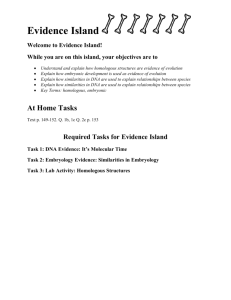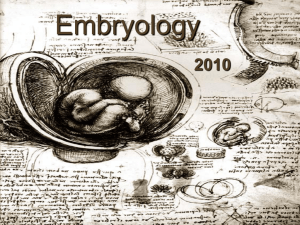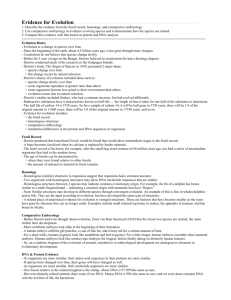Evidence of Change: Embryology
advertisement
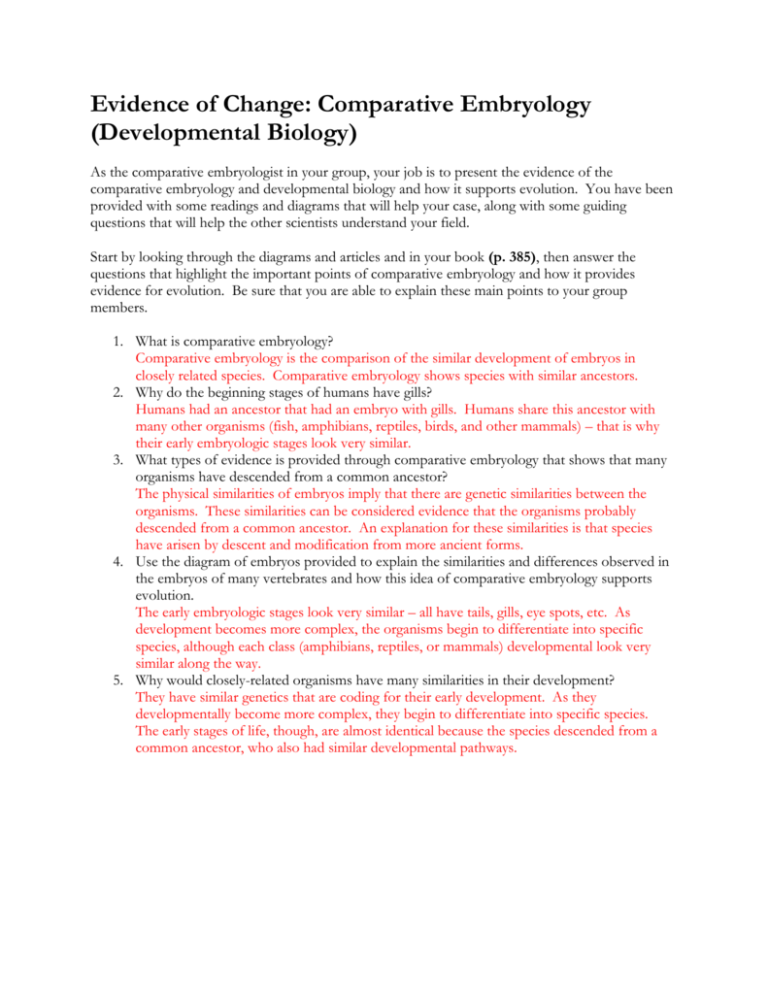
Evidence of Change: Comparative Embryology (Developmental Biology) As the comparative embryologist in your group, your job is to present the evidence of the comparative embryology and developmental biology and how it supports evolution. You have been provided with some readings and diagrams that will help your case, along with some guiding questions that will help the other scientists understand your field. Start by looking through the diagrams and articles and in your book (p. 385), then answer the questions that highlight the important points of comparative embryology and how it provides evidence for evolution. Be sure that you are able to explain these main points to your group members. 1. What is comparative embryology? Comparative embryology is the comparison of the similar development of embryos in closely related species. Comparative embryology shows species with similar ancestors. 2. Why do the beginning stages of humans have gills? Humans had an ancestor that had an embryo with gills. Humans share this ancestor with many other organisms (fish, amphibians, reptiles, birds, and other mammals) – that is why their early embryologic stages look very similar. 3. What types of evidence is provided through comparative embryology that shows that many organisms have descended from a common ancestor? The physical similarities of embryos imply that there are genetic similarities between the organisms. These similarities can be considered evidence that the organisms probably descended from a common ancestor. An explanation for these similarities is that species have arisen by descent and modification from more ancient forms. 4. Use the diagram of embryos provided to explain the similarities and differences observed in the embryos of many vertebrates and how this idea of comparative embryology supports evolution. The early embryologic stages look very similar – all have tails, gills, eye spots, etc. As development becomes more complex, the organisms begin to differentiate into specific species, although each class (amphibians, reptiles, or mammals) developmental look very similar along the way. 5. Why would closely-related organisms have many similarities in their development? They have similar genetics that are coding for their early development. As they developmentally become more complex, they begin to differentiate into specific species. The early stages of life, though, are almost identical because the species descended from a common ancestor, who also had similar developmental pathways.
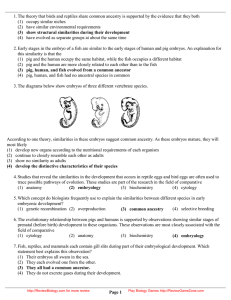
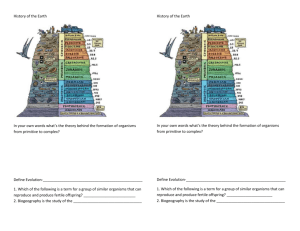
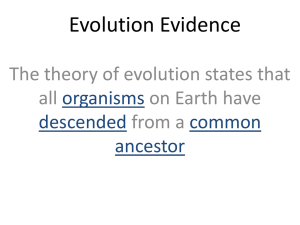

![Evidences_for_Evolution[1]](http://s2.studylib.net/store/data/005782474_2-92d918c9fbb15c5c4fb484555d2a0a0a-300x300.png)

